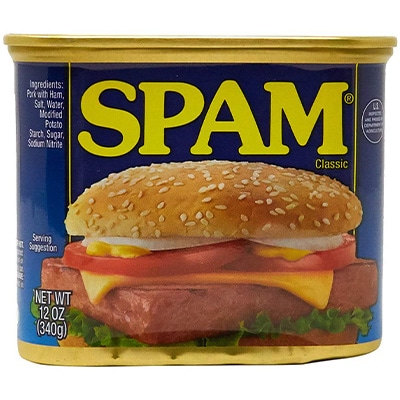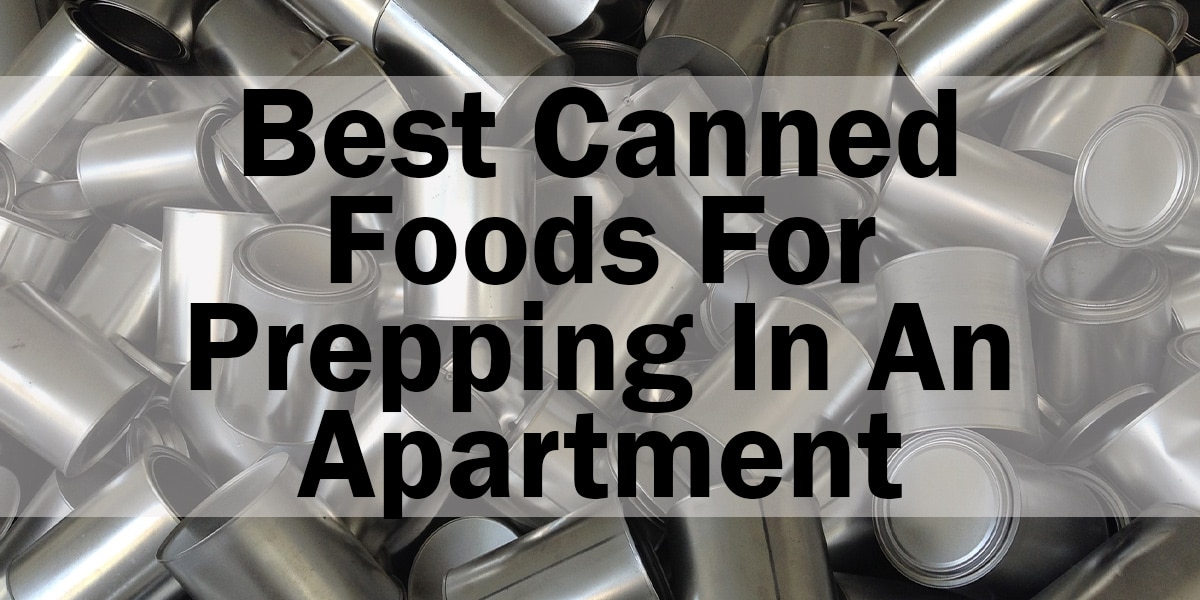This site contains affiliate links to products. We may receive a commission for purchases made through these links. More Information
Living in an apartment and trying to prep for disasters is always a challenge, mostly due to space constraints. Canned goods play a key role in any preppers plans, but knowing which canned goods to stock up on when you are living in an apartment or condo can be a challenge. To that end, I’ve put together my list of items I would stockpile if I was prepping in an apartment.
Canned goods to stock up for in an emergency when you are living in an apartment need to be flexible, cover your bases for diet, and most of all are food that you will actually eat. Some essentials would be canned corn and green beans, tomatoes, and a couple of types of meat. I would avoid stocking up on canned soup and single-serving goods unless you have extra space.
As you will want to rotate your goods on a regular basis, it is essential to only buy things that you will actually use on a regular basis. Now while you are less likely to use your canned meats, it is good to get used to cooking with them and find some recipes that you like them in. Living in a survival situation is tough, but having meals that aren’t just nutritious but taste good is a real plus! I absolutely suggest you actually print out an keep in a binder a SHTF cookbook with recipes and instructions for cooking all of your survival supplies. If things go bad, you may not have the option of looking up instructions on the internet.
Canned Vegetables
Canned Corn – A great source of fiber and starch, canned corn makes a great addition to other SHTF friendly recipes. Canned corn is good to have on hand for ease of use, but don’t overlook that it also comes freeze-dried and popping corn. Both last a very long time and while freeze-dried corn is great soups and stews, popping corn is good for not only nutrition but keeping morale up.
Canned Green Beans – Not a nutritional powerhouse, green beans make the list for their variety of uses and to help add some contrast to dishes. Of course in a pinch, they can also just be eaten as is.
Canned Chopped Tomatoes – An essential for just about every Italian dish, you can use canned tomatoes for sauces, pizza topping, and in soups/stews. Never be low on tomatoes is my feeling on the subject.
Optional Vegetables To Stock Up On
Canned Peas – Canned peas are an option because they are soft and not great in a lot of recipes. If you like them though, they do provide some protein and a change of pace.
Tomato Paste – I include tomato paste in my optional canned goods for prepping list simply because the small cans don’t take up much space, are inexpensive and can be used to make all sorts of sauces and toppings for other dishes.
Canned Meats For Survival Situations
My suggestion is that when picking food for prepping in an apartment, that you pick three that you like and go with those. Once again, you don’t want to buy food that you won’t eat unless you are desperate. Apartment prepping means managing your space and working with things that fit into your lifestyle. For example, there is no point in stocking up on tuna or salmon if you absolutely despise fish.
Here are some basic categories of canned protein to consider when putting together your plans. In general, depending on your family size, if you choose 3 of these and stock up 6 of each, it should be sufficient for a 2-week apartment survival plan.

Spam – No, don’t run away. Spam, for all the derision it gets, is an incredibly useful and flexible product. Spam can be eaten right from the can, chopped into hash, cubed, fried and put in stew, sliced super then and fried like bacon (my personal favorite) and much more. This along with a long shelf-life make it a prepping must-have.
Canned Chicken – Useful in soups, sandwiches and more, you can always find a use for canned chicken.
Canned Beef – Not a commonly used product, having a little canned beef around to put in soups and stews is a good idea, especially if you are in an area that can experience protracted power outages.
Canned Tuna – Pure protein in a can. Think beyond the simple tuna sandwich and you can use it on salads, in casseroles and more. My personal preference has always been tuna in oil as the stuff packed in water seems a bit washed out to me.
How Long to Store Canned Goods
First off, make sure that all your cans are in good shape and not damaged in any way. Dents and bends can compromise the lining and lead to leakage and bad tasting food. That being said, the general recommendation is to keep using and rotating your stockpile, so nothing ever gets old.
But how long does commercially canned food last? My very unofficial answer is “as long as the can does”. Over time, cans can rust, eventually compromising them, and high acid foods like tomatoes and juice can eat away at the insides and put holes in them. Until one of those two things happens, canned food will effectively last forever, thought the quality and nutrition will decrease over time. Don’t believe me? Even the USDA skirts the answer of if canned food lasts forever.
Will commercially canned foods last forever?
Commercial canning is done under tightly controlled conditions — careful sanitation and the necessary time and temperature under pressure, but there are still limits to how long it will preserve food. There are several factors that limit the shelf life of canned foods. First, cans can rust over time. Shipping accidents, where cans fall and dent or are crushed, also cause container problems.Then there’s can corrosion. In all foods, but especially in high-acid foods like canned tomatoes, natural chemicals in the food continually react with the container. Over several years, this can cause taste and texture changes, and eventually lower the nutritional value of the food.
High temperatures (over 100 °F) are harmful to canned goods too. The risk of spoilage jumps sharply as storage temperatures rise. In fact, canned goods designed for use in the tropics are specially manufactured.
Store canned foods and other shelf stable products in a cool, dry place. Never put them above or beside the stove, under the sink, in a damp garage or basement, or any place exposed to high or low temperature extremes. Temperatures below 85 °F are best. Check your pantry every few weeks and use canned goods you have had on hand for awhile. Don’t purchase bulging, rusted, leaking, or deeply dented cans.
USDA Shelf-Stable Food Safety
Something is Better Than Nothing
One thing you will quickly find out is that having something on the shelf is way better than having nothing when things go south, you can’t get to the store or the shelves are bare when you get there. People think it won’t happen, but the panic over the Corona virus has shown many people just how fast the shelves can go empty.

Even minimal efforts to prepare for a natural disaster will put you far and above the average person who doesn’t think about it until after it is too late and everyone is fighting for resources. Just a little planning ahead can make small disasters more bearable and possibly even make larger ones survivable!





